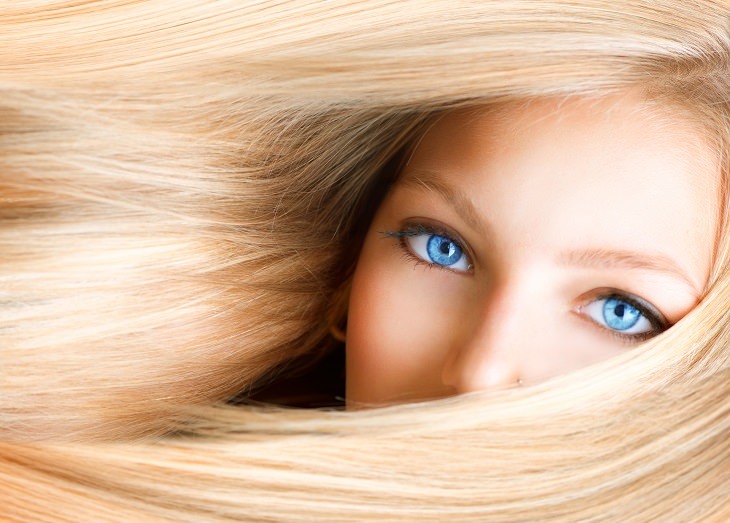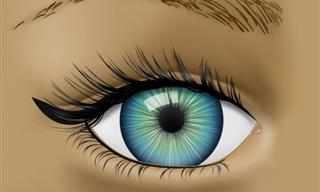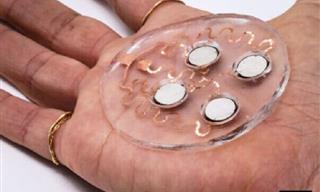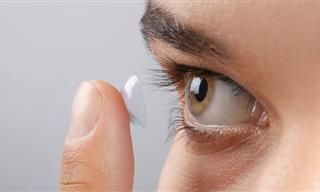Did you know that white cats are a lot more likely to be deaf? Did you know the odds of the cat being deaf were dramatically exacerbated by having either one or two blue eyes? It’s true: 20% of green-eyed white cats are deaf, 40% of white cats with one blue eye are deaf, and about 75% of blue-eyed white cats are deaf. It doesn’t stop there, as white dogs are also likelier to be deaf, as are white ferrets. Albino animals, too, seem to be disproportionately deaf.
But what does hair or eye color have to do with hearing loss? And can such a connection between hair, skin and eye color be drawn in humans, as well? Looking at medical literature, it certainly seems so.
One particularly well-known congenital disorder that some scientists believe may explain hearing loss in animals is called Waardenburg syndrome, and it affects humans as well. People born with Waardenburg tend to have brilliant blue, wide-set eyes, pale blotches on the skin that may appear like vitiligo, and varying degrees of deafness.

Patient with Waardenburg syndrome, displaying broad nose bridge and wide-set eyes
To assume that Waardenburg is the cause for congenital propensity to deafness would mean that all of the aforementioned animals also have this syndrome and that this syndrome explains everything there is to know about the relationship between color and deafness. But this theory doesn’t quite hold up when put to the test.
Several epidemiological studies into the association of paler skin and hearing loss have come up with some shocking results: black people are roughly 50% less likely to develop hearing loss when compared to white counterparts. Studies specifically targeting whites and blacks whose occupation incorporated increased hazard of hearing loss found much the same thing: whites were more susceptible to hearing loss. Well, considering Waardenburg syndrome affects a mere fraction of society and people of various races, it can’t very well explain this disparity, can it?
But it doesn’t end here. Remember how paler eyes predicted higher chances of deafness among white cats? A 2001 study looking at 130 deaf patients found that the same was true of humans. Of the entire study population, 32 patients had acquired deafness as a result of meningitis and the rest had become deaf due to various other reasons. Among the general deaf population, 73% had pale eyes, compared to 27% with dark eyes, while among the meningitis group, the results were even more dramatic, as 94% of the deaf patients had pale eyes, compared to only 6% with dark eyes.
How about hair color? Does that also figure into risks of hearing loss? According to a 2012 study of military personnel who were exposed to sounds of gunfire, soldiers with blond or light brown hair were significantly more vulnerable to hearing loss compared to fellow combatants with dark hair.
The common thread between paler skin tone, lighter hair color, and green and blue irises is melanin, or more accurately, the lack of it. Melanin is the pigment that is responsible for the color of our skin, our hair, and our eyes, and it is produced in specialized cells called melanocytes. Typically speaking, melanocytes are dispersed equally throughout the body, but some unique conditions (such as Waardenburg) may cause particular areas of the skin or the eyes to have an abnormally low level of melanocytes, causing a striking difference between that area and the rest of the body (nonwhites with blue eyes, for example). But what does all of this have to do with deafness?

Source: Cydnee Black, makeup vlogger with Waardenburg syndrome. Black is deaf in one ear. Via
YoutubeWell, we don’t rightly know. We know that all of the color variations presented here are also associated with lack of melanocytes in the inner ear, and can thus surmise that the melanocytes within the ear have an important role in hearing, but we do not know what it is. In the meanwhile, until we manage to figure out the exact mechanism that connects paler complexion to hearing loss, knowing whether you (or ones you hold dear) are in the risk group or not may be able to aid you in avoiding situations that may put your hearing in danger.
 Go to BabaMail
Go to BabaMail



 Patient with Waardenburg syndrome, displaying broad nose bridge and wide-set eyes
Patient with Waardenburg syndrome, displaying broad nose bridge and wide-set eyes
 Source: Cydnee Black, makeup vlogger with Waardenburg syndrome. Black is deaf in one ear. Via
Source: Cydnee Black, makeup vlogger with Waardenburg syndrome. Black is deaf in one ear. Via 


















































